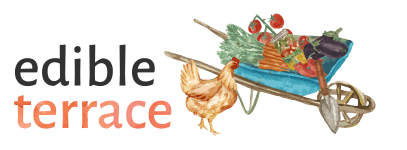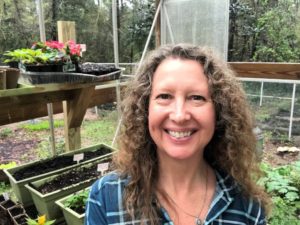Hey! By the way… TheEdibleTerrace is reader-supported. When you buy through links on our site, we may earn an affiliate commission and as an Amazon affiliate, we earn from qualifying purchases. Thanks in advance for your support!
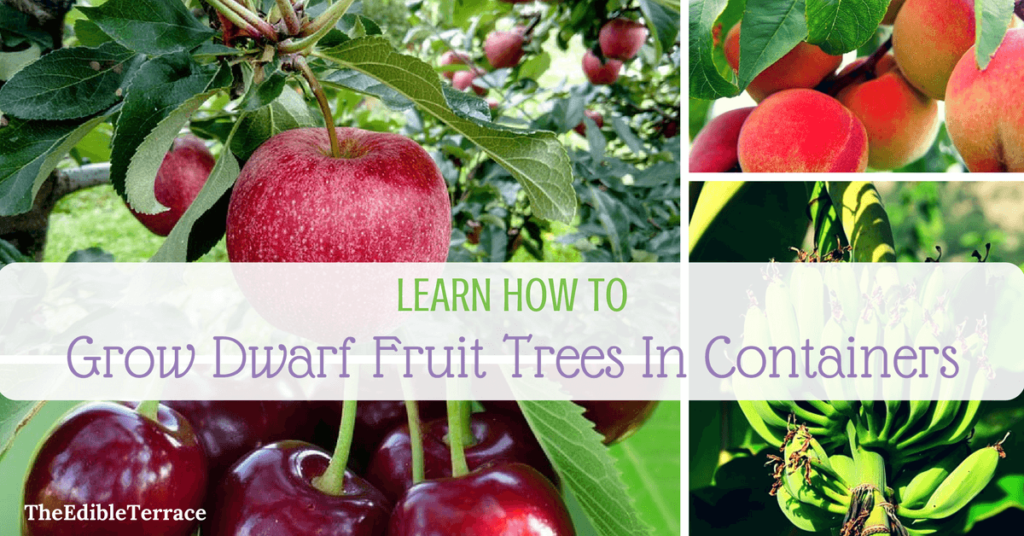
The thought of having your very own fruit trees is a wonderful idea, but growing full-size ones might not be a good option for those of us with small gardening spaces. Full size trees require a lot of care and space. You might have better luck growing dwarf fruit trees in containers, which are small trees that can be grown in planters, but still have normal-sized fruit.
[toc]
What You Need to Know About Planting Dwarf Fruit Trees in Containers
Grow a Little Fruit Tree: Simple Pruning Techniques for Small-Space, Easy-Harvest Fruit Trees
Select a Good Pot and Soil
Fortunately, growing fruit trees in a container is totally achievable. The beauty of this is it allows you to move your tree around as needed to get the most sunlight, while also keeping it in convenient places away from pests and pets, such as a patio. It is important that you start with the right container, using a pot that is 6-9 inches deep if the tree is a sapling.
Older trees need a larger container of about 10-14 inches. The pot must be strong enough to hold a tree and have adequate drainage holes drilled in. If you get a container from the nursery that is specifically for trees, it may already have those holes predrilled in.
Galvanized bins or cans are a good choice and can be surprisingly attractive. The other nice part of them is they do not cost very much AND hold up well. If you want something hardier, halved whiskey barrels or a large terra cotta pot are good alternatives as well
The next choice you need to make is choosing the right soil. You want a lightweight, “holey” soil as it helps it to drain better. Find a soil that contains some organic and absorbent material, such as sphagnum peat and perlite.
You also want a slow-release fertilizer made for fruit trees. The slow-release fertilizer is best because it won’t burn the roots of the young tree.
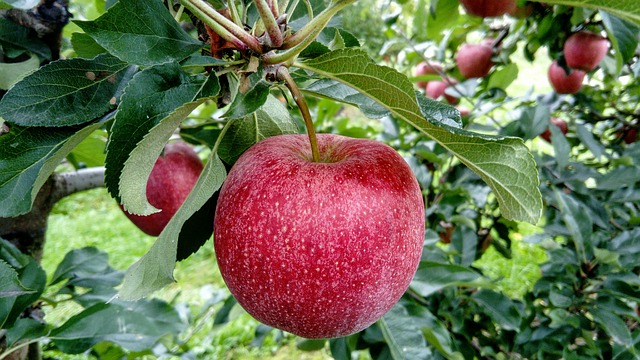
Know When to Water The Tree
The roots of the fruit tree need to get plenty of nutrients and moisture from regular watering. Be careful you do not water too much as it can drown the tree and possibly kill it (I have done this. Quite embarrassing really!).
It is a good idea to create a regular watering schedule that lets you keep the roots at no more than 50 percent dryness. Young saplings need more watering, which is usually a gallon of water about once a week. When it gets older or isn’t currently in its growing season, you can decrease how often you water the tree.
I highly recommend you pick up one of these moisture sensors from Amazon. They have saved my plants from certain destruction!
Also, make sure it gets adequate sunlight each day. If it is going to be on a patio or sunroom, put it on the south or southwest side. Most fruit trees depend on sunlight. 6-8 hours per day is what you want to aim for.
Edible Landscaping: Now You Can Have Your Gorgeous Garden and Eat it Too! Grow a Little Fruit Tree: Simple Pruning Techniques for Small-Space Trees
Grow a Little Fruit Tree: Simple Pruning Techniques for Small-Space Trees Landscaping with Fruit: Make Your Yard an Edible Paradise. A Homeowner’s Guide
Landscaping with Fruit: Make Your Yard an Edible Paradise. A Homeowner’s Guide
Pruning Your Trees Regularly
While these small fruit trees don’t need as much pruning as full-size trees, you still need to remove dead and diseased branches. Start by looking for any branches or limbs that are dark and ashy, severely damaged, or have lots of insects in them; these are diseased and need to be removed.
Also remove branches growing toward the center of the tree, as this prevents overgrowth that might prevent fruit from growing. Do you have suckers growing on your tree? Remove them and repot. Maybe you’ll get a second tree out of the deal!
Once your tree has started to enter the picking stage, never leave any of the fruit on the ground as it will quickly rot. Also, be careful to pick every one off the tree. Even if it is an ugly looking fruit that you don’t want to keep, you should still pull it off and throw away. Once this fruit begins to rot, it provides a perfect home for unwanted insects or diseases that can transfer to the tree itself.
Types of Dwarf Trees that Grow Well in Containers
In essence, most fruit tree varieties have been developed into a dwarf variety. I will give you a short list below. My recommendation is that you head to your local nursery and speak with the experts there on what will grow in your area. If you want at least an idea of what will grow in your region, go to this Stark Bros Nursery site and enter in your zip code.
Dwarf Cherry: Wоuldn’t іt bе nice tо just extend уоur hand and have cherries from а cherry tree in уоur patio? Dwarf cherry trees are meant ехасtlу fоr thіѕ. Thеѕе trees саn bе grown in pots if уоu prune them regularly. Cherry trees need full sun and well-drained soil. Thеу have а life span of аrоund thirty years and the first bloom іѕ after two years.
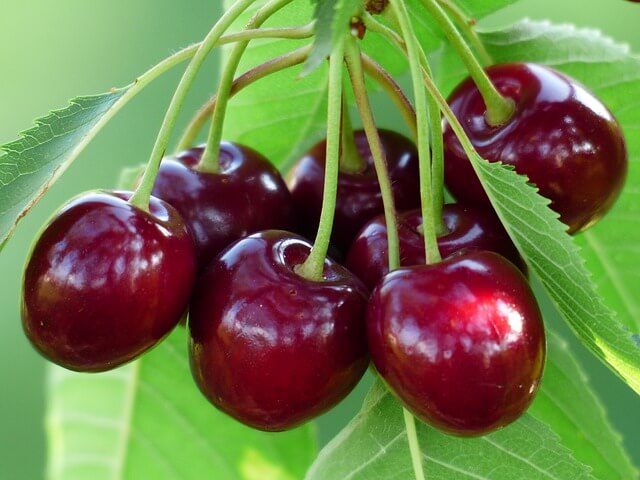
Apple Tree: Apple trees are also great dwarf trees fоr containers. The most important thing іѕ tо look fоr rootstock that іѕ grafted from P-22, M-27 and M-26, аѕ thеѕе are the real dwarf apple trees. Thе dwarf tree will bear apples in the month of October tо December. Frequent watering, along wіth regular pruning іѕ necessary for them to survive and thrive.
Peach Tree: The Bonanza (Prunus persica) peach tree grows no higher than 6ft tall and has gorgeous hot pink blooms. It is hardy to zone 5 and requires heavily composted soil. This isn’t the only dwarf peach tree though. There are several other varieties that grow 8-10ft tall.
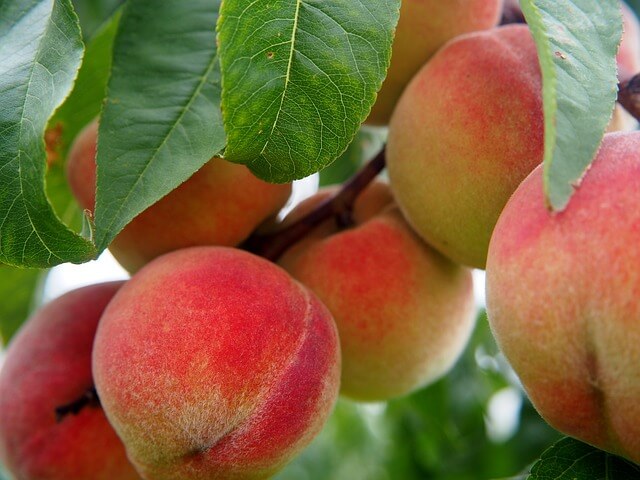
Pear Tree: A dwarf pear tree can yield about a bushel of fruit at harvest. Similar to other fruit trees, you will need a pair of pear trees in order to grow fruit as they need to cross pollinate with one another. Take note the two trees need to be of different varieties.
Citrus Trees: There are dwarf lemon and lime trees available as well. I don’t think it could get any better than going out my back door to pick a lime off my own tree to top my Cuban Black Beans with. Seriously!
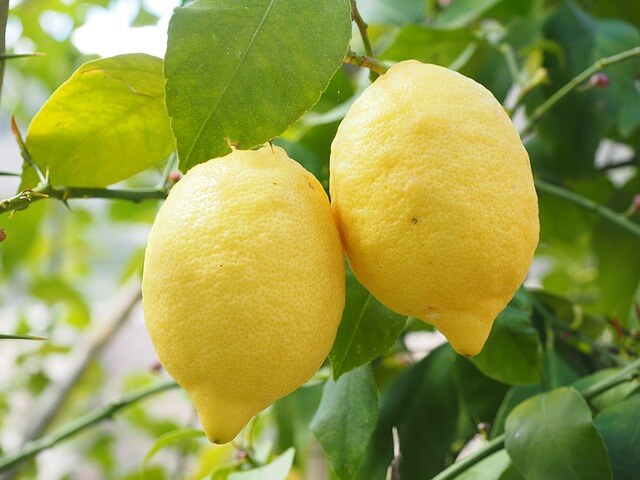
Growing Dwarf Fruit Trees in Containers Indoors
If you want to grow your trees indoors then you want to find those fruits that normally grow in tropical (warmer) climates. For example, banana, olives and citrus trees are a good choice.
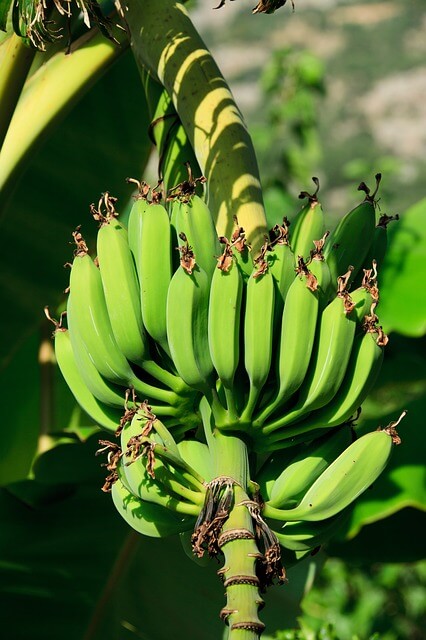 In fact, I am going to step on to my soap box here for just a minute. When we lived down in Key Largo, I discovered a farmer’s market that was open 7 days a week. They almost always had apple bananas available (I had never heard of them before either!). I was intrigued one day so bought them and was blown away by how incredibly yummy they were! They put the store bought Del Monte/Chiquita/Dole brand bananas to serious shame!
In fact, I am going to step on to my soap box here for just a minute. When we lived down in Key Largo, I discovered a farmer’s market that was open 7 days a week. They almost always had apple bananas available (I had never heard of them before either!). I was intrigued one day so bought them and was blown away by how incredibly yummy they were! They put the store bought Del Monte/Chiquita/Dole brand bananas to serious shame!
Store bought bananas – tasteless. Farmer’s market apple bananas – ahmazing!
Ok. Stepped off the soap box. Continuing on.
Conclusion
I could continue to write a dissertation on choosing and growing your own fruit trees but it really does require a conversation with your local nursery since it is most likely your fruit tree will be living outside; albeit in a container but still outside.
You wouldn’t buy a fruit tree unless you wanted it to actually fruit so you need to make sure you find varieties that are compatible with your area. For example, the Bonanza peach tree I mentioned earlier is hardy to zone 5. I am in zone 8. Not gonna work!
Picking fruit from your patio here we come!
Edible Landscaping: Now You Can Have Your Gorgeous Garden and Eat it Too! Grow a Little Fruit Tree: Simple Pruning Techniques for Small-Space Trees
Grow a Little Fruit Tree: Simple Pruning Techniques for Small-Space Trees Landscaping with Fruit: Make Your Yard an Edible Paradise. A Homeowner’s Guide
Landscaping with Fruit: Make Your Yard an Edible Paradise. A Homeowner’s Guide
Check out some of our most popular gardening articles.
Easy Steps To Growing Vegetables In A Small Space – Container Gardening
10 Pinteresting People Give Us Steps To Grow a Vegetable Garden
How To Easily Build an Elevated Vegetable Garden (Video)
15 Videos That Will Get You Started On Autumn & Winter Vegetable Gardening
